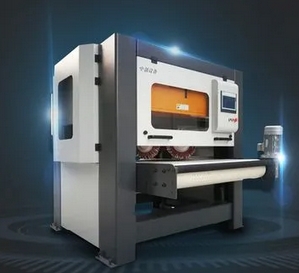Deburring processes are crucial in modern manufacturing. They not only enhance the appearance and quality of workpieces but also improve industrial production efficiency and reliability. However, to achieve excellent deburring results, selecting the right equipment is essential. This article provides you with a guide on how to choose the best deburring process equipment.

Why Choosing the Right Deburring Process Equipment Matters?
Before delving into the selection of deburring process equipment, let's understand why this decision is so vital. The quality and suitability of deburring process equipment directly impact the following aspects:
- Surface Quality: High-quality deburring process equipment ensures smooth, burr-free, and uniform workpiece surfaces, thereby enhancing appearance and quality.
- Production Efficiency: Proper equipment can expedite the deburring process, increasing production efficiency and reducing production costs.
- Workpiece Reliability: Correctly chosen equipment helps ensure that workpieces meet design requirements, enhancing their reliability and performance.
How to Choose the Best Deburring Process Equipment?
Here are some recommendations for selecting deburring process equipment:
1. Understand Workpiece Requirements:
Begin by understanding your workpiece requirements. Different types of workpieces may require varying deburring process equipment. Consider factors like material, shape, size, and types of burrs.
2. Identify Applicable Deburring Methods:
Familiarize yourself with different deburring methods, such as abrasive flow machining, chemical deburring, electrochemical deburring, and more. Select the method that suits your needs.
3. Define Your Budget:
Clearly outline your budget constraints. Prices for different types of deburring equipment can vary significantly. Ensure your choice falls within your budget range.
4. Consider Production Scale:
If you require deburring on a large scale, automated or semi-automated equipment may be considered to enhance efficiency. For small-scale production, manual equipment may suffice.
5. Seek Reliable Suppliers:
Choose reputable suppliers of deburring equipment. Check customer reviews and reference cases to ensure the quality of the equipment and after-sales support.
6. Factor in Training and Maintenance:
Ensure that your team receives proper training to operate and maintain the deburring equipment correctly, prolonging its lifespan.
Conclusion:
Choosing the appropriate deburring process equipment is paramount for achieving outstanding surface treatment results. Understanding workpiece requirements, budget constraints, production scale, and collaborating with reliable suppliers can help you select the best equipment. With the right equipment choice, you can enhance workpiece quality, improve production efficiency, and reap lasting benefits for your manufacturing business.





 Customer service 1
Customer service 1  Customer service 2
Customer service 2